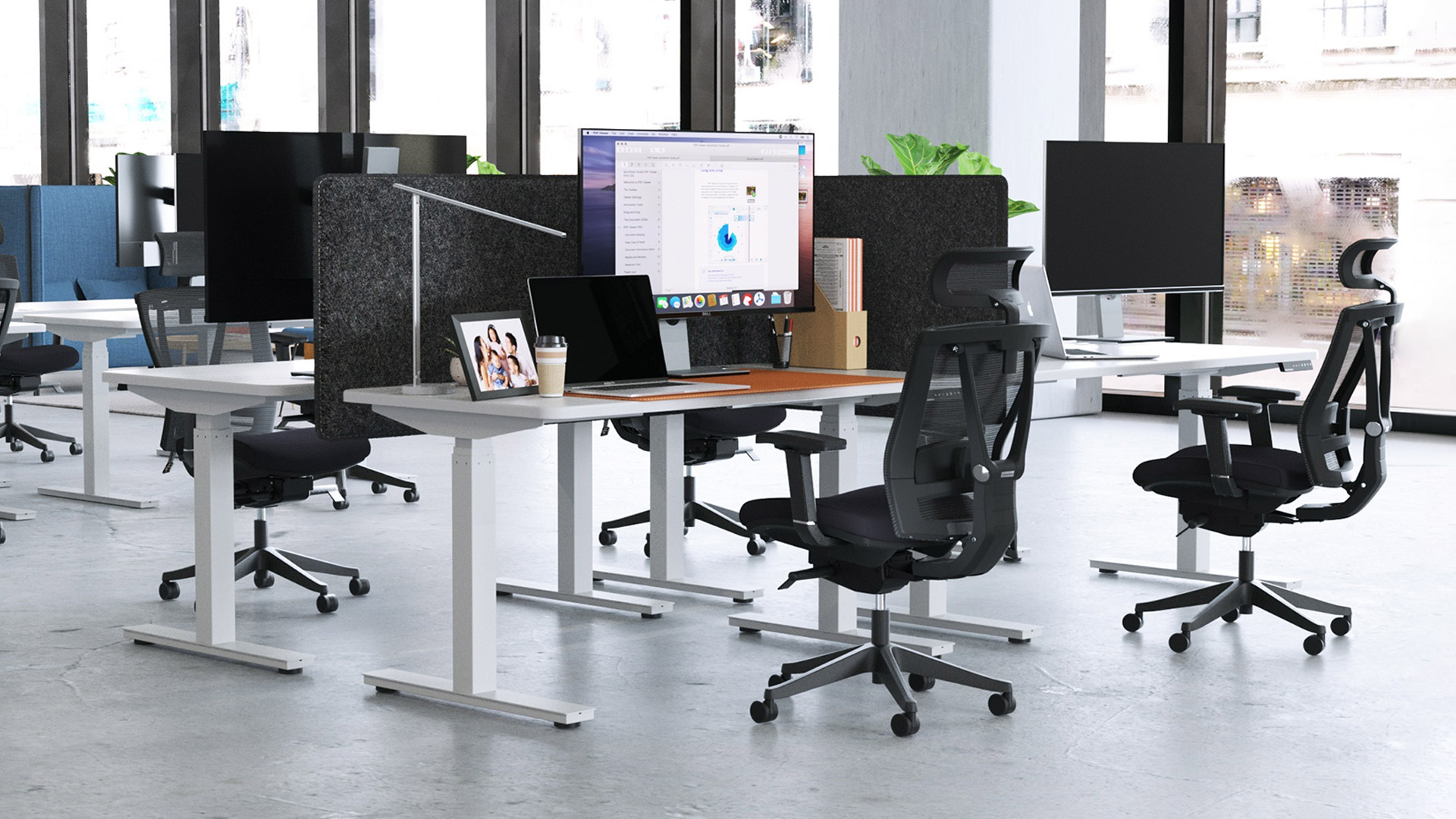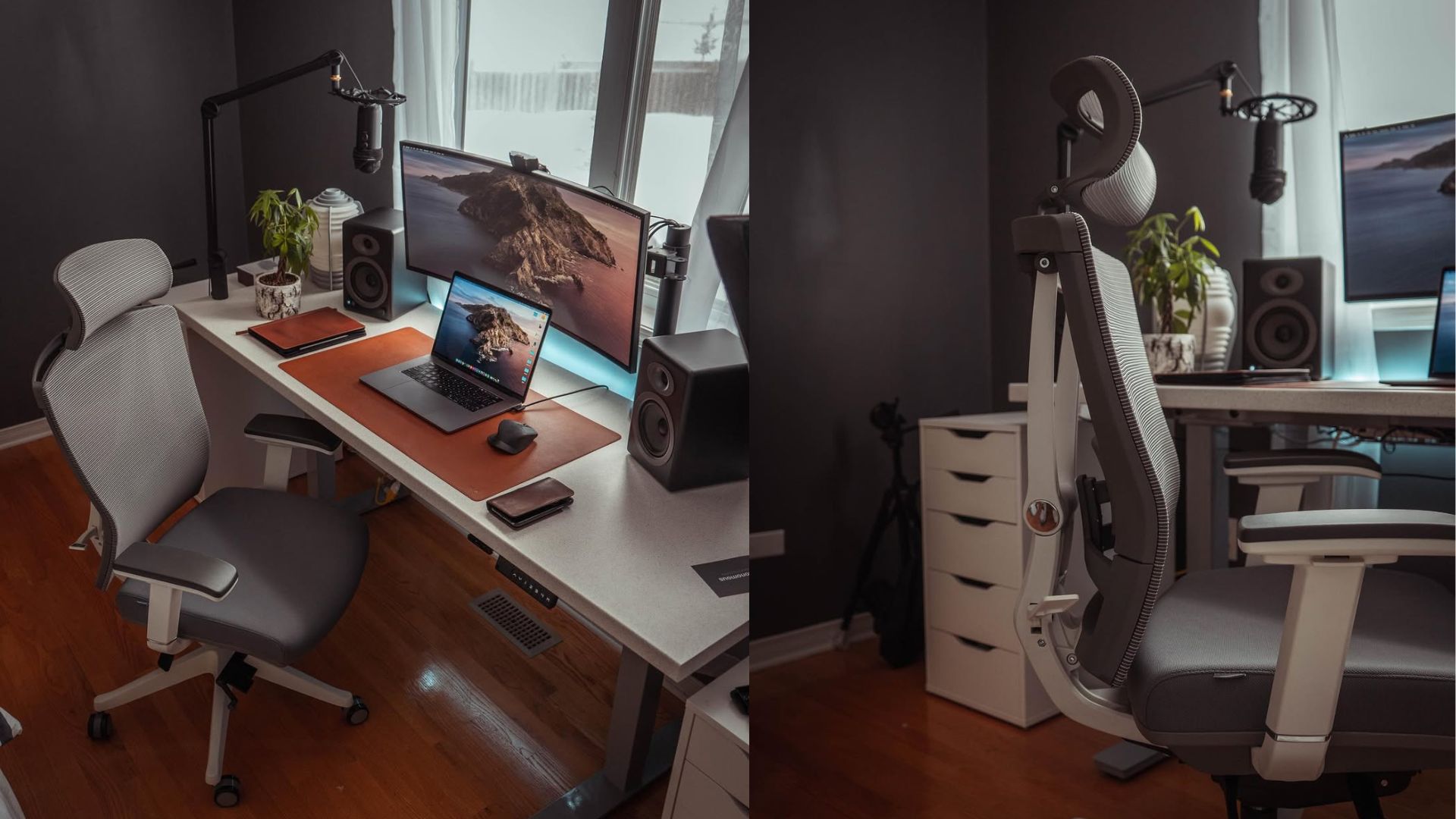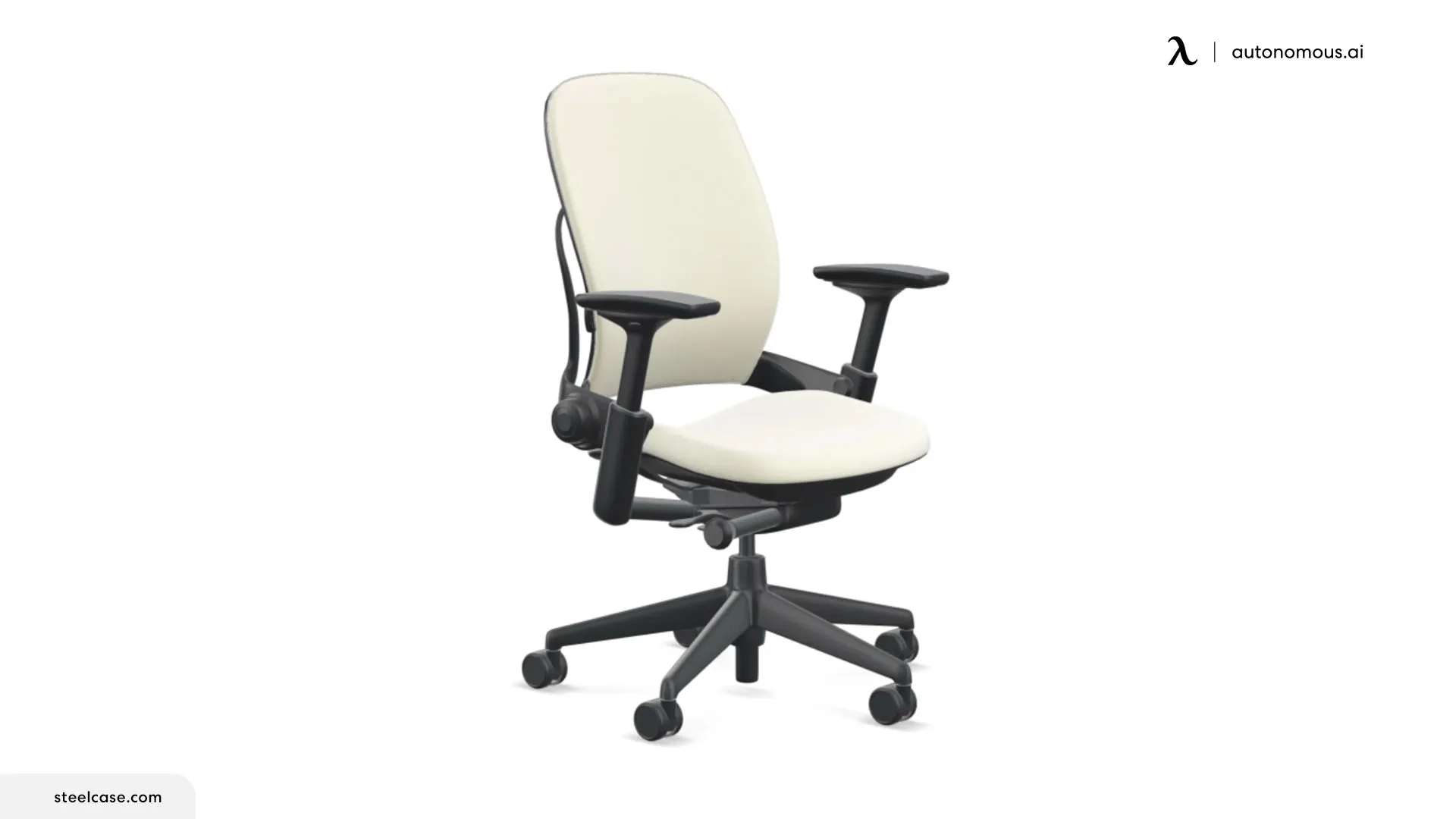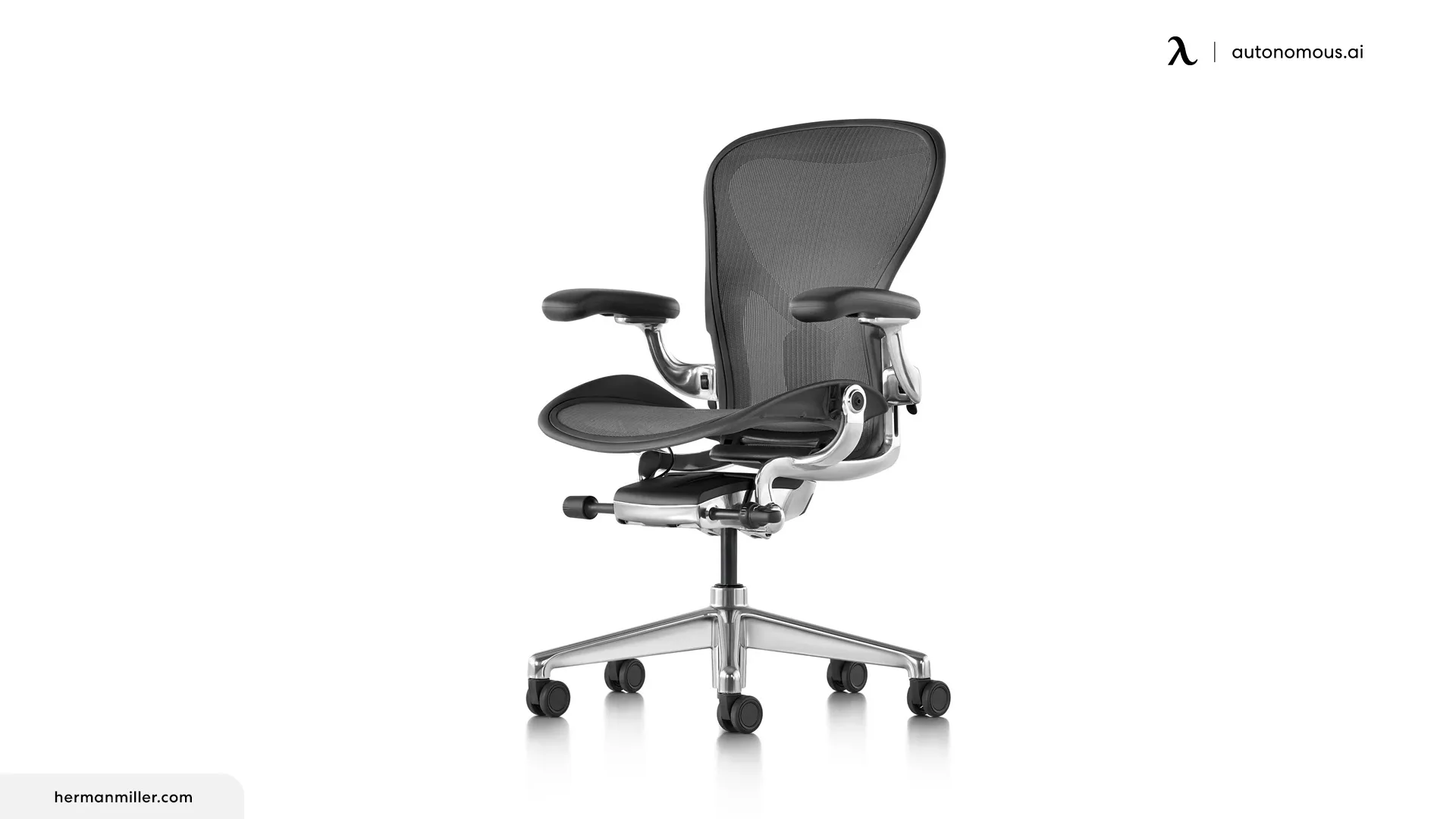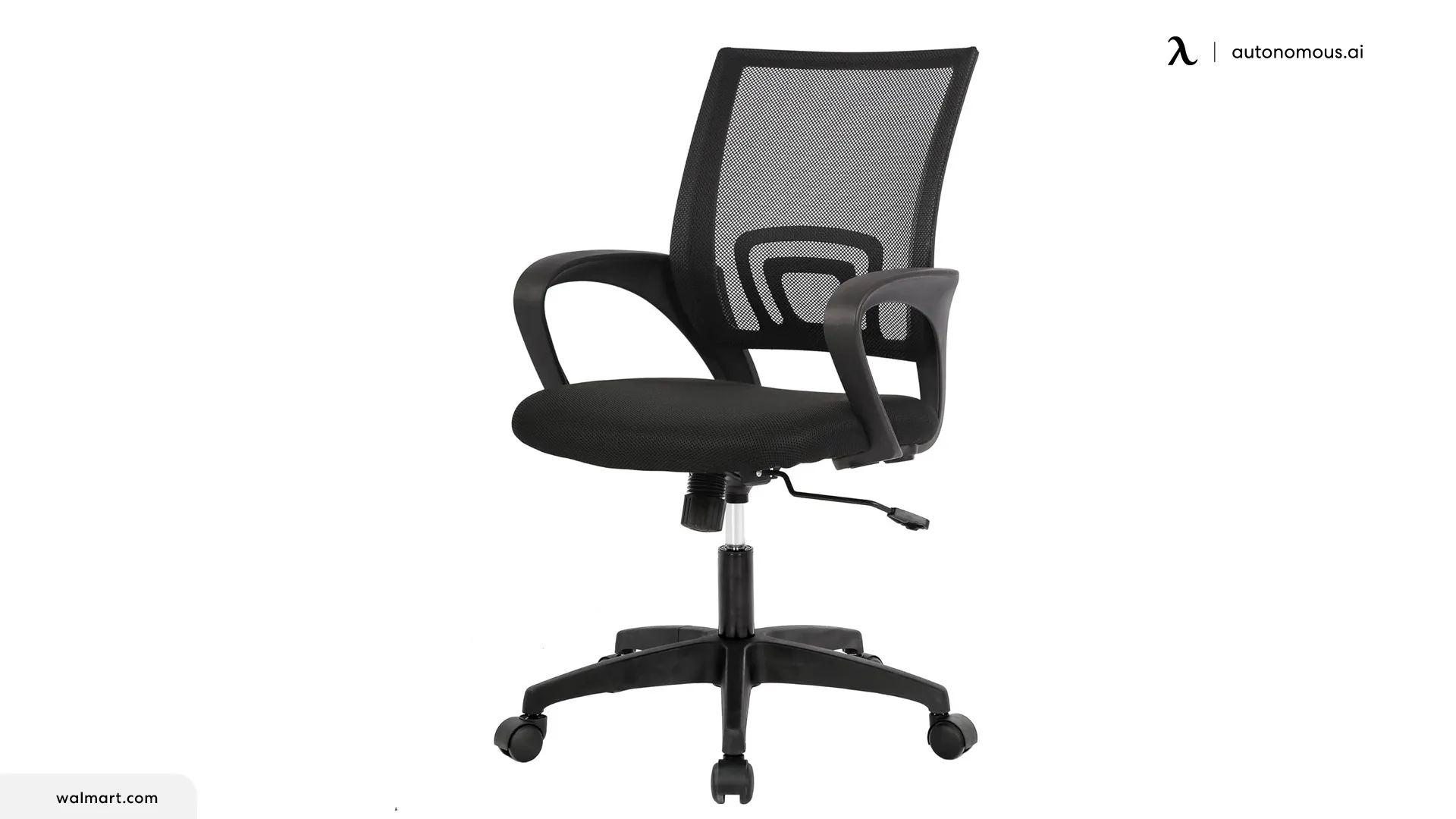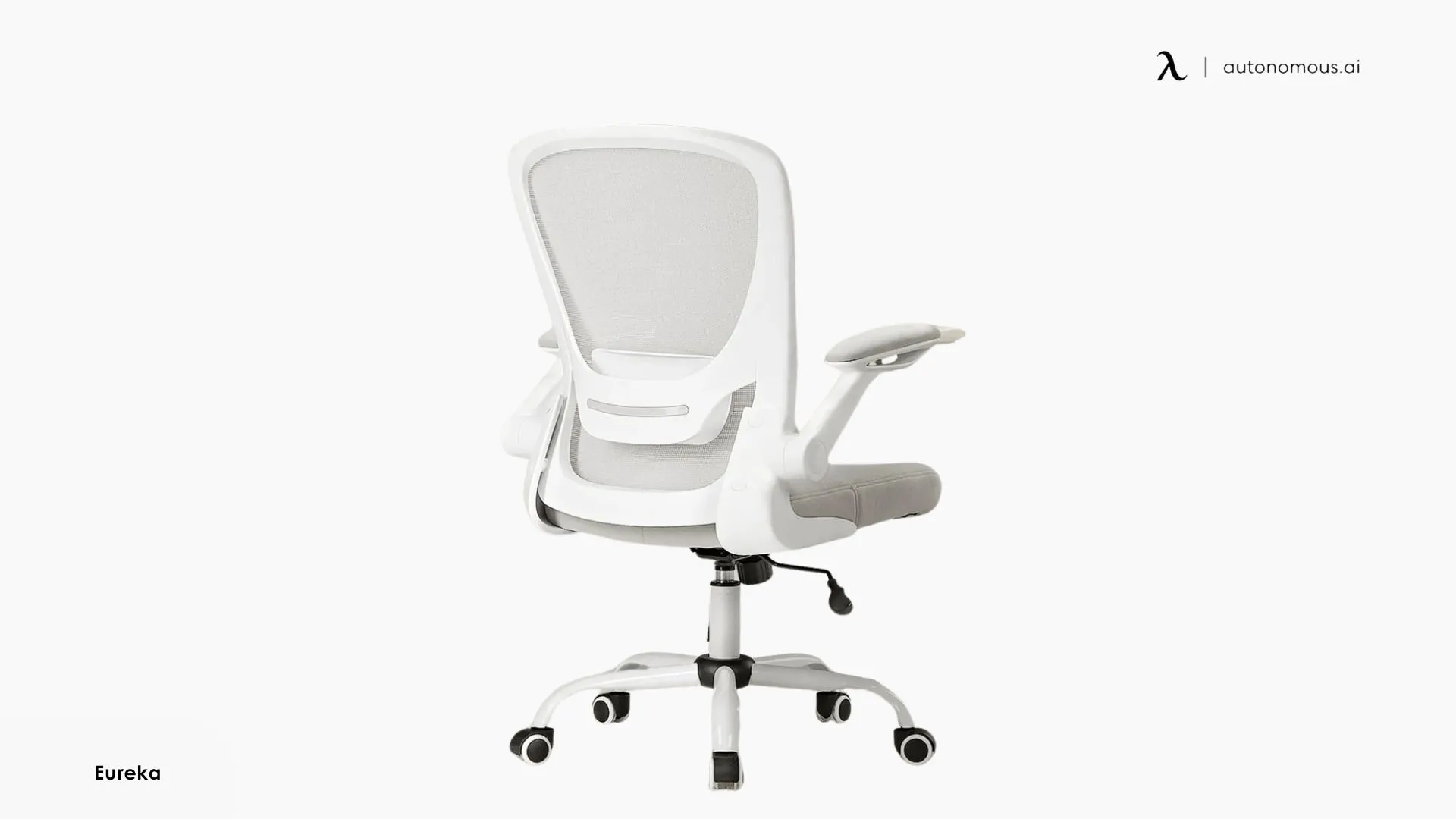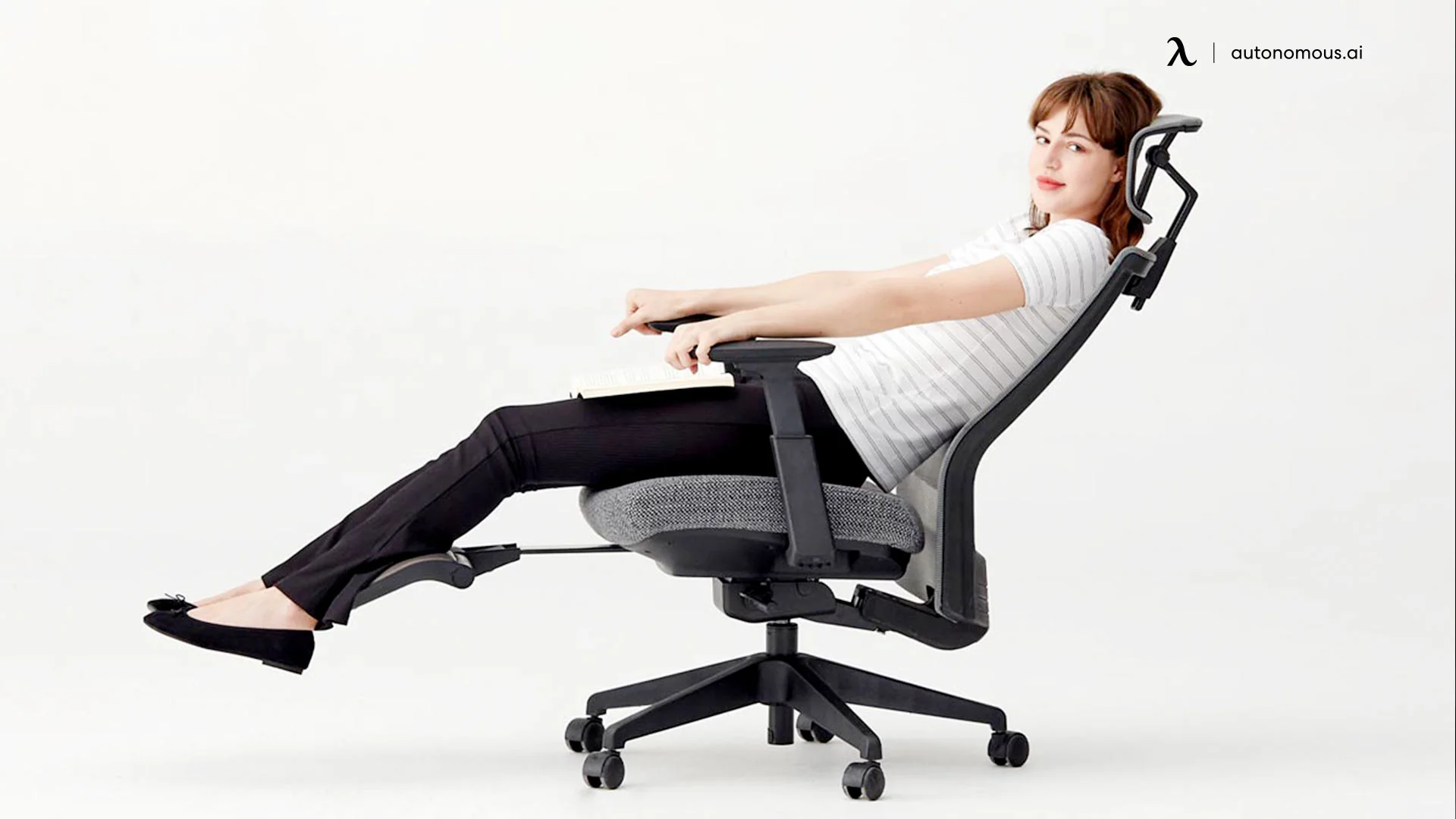
The Best 11 Petite Office Chairs For Short People
Table of Contents
- The Best Office Chairs For Short People
- 1. Autonomous ErgoChair Pro - Best For All-Day Comfort
- 2. Steelcase Leap V2 - Best Custom Fit For Multiple Users
- 3. Herman Miller Aeron – Most Comfortable For Long Hours
- 4. OM Paramount Petite – Best Fit For Truly Petite Frames
- 5. Clatina Executive Chair - Best Budget Option
- 6. Sidiz T25 – Best For Extra-Short Users
- 7. Mimoglad Task Chair - Best High-Back Option
- 8. Hbada Office Desk Chair – Best For Small Spaces
- 9. BestOffice Ergonomic Chair – Best Entry-Level Option
- 10. Sweetcrispy Chair – Best For Soft Cushioning
- 11. Eureka Onyx Series Ergonomic Chair – Best For Structure And Aesthetics
- Choosing The Best Office Chair For Short People
- FAQs
- Bottom Line
At 5'2", I’ve always felt a little out of place in the office—literally. Most desks feel too tall, chairs don’t let my feet touch the floor, and I’ve lost count of how many times I’ve had to drag over a footrest just to get comfortable.
Finding the right office chair as a petite person isn’t just about comfort—it’s about supporting your posture, circulation, and energy throughout the day. After testing a lot of chairs, I’ve finally narrowed it down to a few that truly work for small frames like mine. If you're a smaller-framed user struggling to find comfort, this guide to finding the right office chair for petite women might also help.
The Best Office Chairs For Short People
After trying many options and paying close attention to key features like seat height, depth, lumbar support, and adjustability, I finally found several contenders that truly work. If you’re looking for the best office chair for short people, here are the chairs I personally recommend.
A Quick Look
Chair Model | Seat Height Range | Size Profile | Ideal For |
Autonomous ErgoChair Pro | 16" – 20" | Standard | Petite professionals needing all-day ergonomic support |
Steelcase Leap V2 | 15.5" – 20.5" | Standard | Petite users sharing workspaces or needing full adjustability |
Herman Miller Aeron (Size A) | 14.75" – 19" | Compact | Smaller users working long hours, especially in warm climates |
OM Paramount Petite | 17" – 22" | Compact | Users under 5'3" needing a tailored ergonomic chair |
Clatina Executive Chair | 16" – 21" | Standard | Budget-conscious petite users needing practical daily support |
Sidiz T25 | 15" – 20" | Compact | Users under 5'2" wanting style and simplicity in tight spaces |
Hbada Office Desk Chair | 16" – 19.5" | Compact | Short users needing a basic ergonomic chair for small rooms |
BestOffice | 16" – 21" | Standard | Shorter users who need an entry-level ergonomic chair |
Sweetcrispy | 15.5" – 20" | Standard | Petite users prefer soft cushioning over mesh |
Eureka Onyx Series | 16" – 21" | Standard | Style-conscious short users who want structured support |
1. Autonomous ErgoChair Pro - Best For All-Day Comfort
The ErgoChair Pro stands out as the best office chair for short people due to its unparalleled adjustability, ergonomic design, and premium build. Designed to accommodate users of all heights and body types, this chair supports dynamic sitting modes, making it a top pick for comfort and productivity.
At first glance, it has a clean, modern look that blends easily into any workspace, but it’s the level of adjustability that really impressed me. For someone like me, who often struggles to find chairs that fit a 5'2" frame properly, the ErgoChair Pro was refreshingly customizable in all the right ways.
It didn’t just help me feel more supported, this office chair for short people with back pain actively improved my posture and comfort throughout the workday.
What I Love About It
- Highly adjustable seat height and depth:
The seat can be lowered far enough for my feet to rest comfortably flat on the floor without needing a footrest. The seat depth adjustment is especially helpful—it lets you fine-tune how much of your thigh is supported, which is something most chairs overlook for petite users.
- Dynamic lumbar support:
The flexible lumbar cushion moves with you and molds to the curve of your lower back. It doesn’t feel like a hard bump or ridge—it’s subtle, supportive, and helps prevent that annoying lower back fatigue I used to feel by 3 p.m.
- Armrests that move with you:
You can raise, lower, widen, or angle them to find just the right position for your arms. This helps relieve tension in the shoulders and neck, which I often struggle with when armrests are too far apart.
- Smooth recline and tension control:
I could lean back naturally without that jarring ‘kick’ some chairs have. It supported me no matter what position I was in.
Areas That Could Be Improved
- Setup takes time:
There’s a bit of a learning curve when adjusting all the settings for the first time. But once you dial everything in, the payoff is worth it. It’s like tailoring a chair to your exact needs.
Ideal for:
Petite professionals who work long hours at a desk want a chair that adapts to their body, not the other way around. Whether you're working from home, coding all day, or managing a hybrid team, the ErgoChair Pro provides lasting support and helps you stay focused and comfortable.
For those seeking the best chair for lower back and hip pain at home or an office chair with spine support, the ErgoChair Pro is an exceptional choice.
2. Steelcase Leap V2 - Best Custom Fit For Multiple Users
The Steelcase Leap V2 might not be marketed specifically for petite users, but its flexibility makes it one of the most accommodating chairs I’ve tried.
It’s thoughtfully engineered like a tank and designed to move with your body rather than forcing you into a fixed position, making it a very comfortable chair for long hours. This chair is especially useful if you're sharing it with others of different heights or want something that adapts to changing posture throughout the day.
What I Love About It
- Highly adaptable seat depth and height:
I could easily adjust the seat to support my thighs without it pressing into the back of my knees. The height range also works well for shorter users who want their feet to rest flat without a footrest.
- Four-way adjustable armrests:
The arms adjust in height, width, pivot, and depth, making it easier to find that sweet spot for your elbows and shoulders. This is a huge plus when switching between tasks like typing and reading.
Areas That Could Be Improved
- No footrest or headrest:
At this price point, I hoped for more optional comfort features. A built-in leg or headrest would have made it feel more tailored to full-day use, especially for petite users who benefit from lower body support while reclining.
Ideal for:
Anyone looking for a top-tier ergonomic chair that adapts to a range of body types. It's especially helpful for shorter users who share their workspace or shift postures throughout the day. If you need an office chair for long hours, this chair offers unmatched support and ergonomic benefits.
3. Herman Miller Aeron – Most Comfortable For Long Hours
The Aeron Chair by Herman Miller Size A is the smallest model in the lineup, and it’s genuinely tailored to petite individuals. The comfort is exceptional, and it’s a dream if you’re working long hours in warmer environments.
With a responsive mesh and refined build, the Size A feels light and breathable without compromising on support or structure. It’s an investment, and while the quality justifies the price for many, it may not be feasible for everyone.
What I Love About It
- Size A is truly petite-friendly:
Unlike many “standard” chairs, this one feels like it was engineered for smaller frames. The seat and backrest both feel proportional to my height, which helped me stay comfortably upright and grounded.
- Unrivaled breathability:
The Pellicle mesh material allows heat and moisture to pass through, keeping you cool even after hours of sitting. I never felt sweaty or overheated, which is a huge win during hot months.
- Smooth tilt mechanism:
The recline is incredibly natural and fluid. It follows your body as you move, so you’re never fighting against resistance or feeling locked into place.
Areas That Could Be Improved
- No included headrest:
While the back support is excellent, a headrest would make it even more appealing for those of us who like to lean back during calls or reading breaks.
Ideal for:
Petite users who value breathability and long-term comfort over plush cushioning. If you work in a warmer environment or prioritize airflow, support, and movement, the Aeron Size A is well worth considering, especially if you're okay investing in a chair that will likely outlast everything else in your office.
For those seeking a small office chair, this option provides a perfect balance of support, comfort, and style for petite office workers.
4. OM Paramount Petite – Best Fit For Truly Petite Frames
The OM Paramount Petite chair is a bit of a hidden gem in the ergonomic world. It doesn’t scream luxury, but this desk chair for short people is highly functional, customizable, and—most importantly, actually built with petite users in mind.
Unlike many chairs that try to accommodate everyone, this one seems laser-focused on getting the fit right for smaller bodies.
What I Love About It
- Compact proportions:
From the seat width to the backrest height, everything feels appropriately sized for someone under 5'3". It was a relief not to feel “swallowed” by my chair for once.
- Adjustable seat depth and height:
The depth can be customized to suit shorter legs, helping reduce pressure behind the knees. The chair also lowers enough to comfortably plant your feet flat on the ground—no footrest required.
- Independent tilt controls:
I loved that I could adjust the seat and back tilt independently. This level of control helped me find a reclining angle that supported my lower back without pushing my hips too far forward.
- Sturdy construction:
Even with its smaller size, the chair is rated to support up to 300 lbs and feels very solid and dependable. Need a supportive option that accommodates a higher weight capacity? This office chair for 300 lbs is a reliable pick.
Areas That Could Be Improved
- Fewer upholstery choices: You might have fewer options when it comes to color or fabric finishes compared to more premium models.
Ideal for:
People under 5'3" who want a no-nonsense ergonomic chair for short people that prioritizes proper support and petite sizing over flashy features. It's a great pick for focused work sessions, shared office spaces, or task-heavy roles where posture really matters.
5. Clatina Executive Chair - Best Budget Option
For a budget-friendly desk chair for short people, it delivers real ergonomic benefits and doesn’t feel flimsy. It’s not as flashy or customizable as some premium models, but if you’re petite and on a budget, it’s one of the better options out there.
What I Love About It
- Simple but effective design:
The seat height adjusts low enough for me to sit comfortably without my feet dangling, and the fixed backrest angle encourages good posture without forcing it. If you’re wondering where lumbar support should be positioned, this chair does a decent job of aligning naturally with your lower back
- Supportive foam cushion:
The seat is firm but not hard. It gives you that grounded feeling without flattening over time, which is impressive for a chair at this price point.
Areas That Could Be Improved
- Armrests feel a bit thin:
I rest my arms often while working, and the padding here is minimal. If you tend to lean on your elbows, you might notice some discomfort after a few hours.
- Headrest not ideal for short users:
The optional headrest is set too high for me, so I preferred using it without. If you’re shorter, the headrest may not align properly with your neck.
Ideal for:
Petite users looking for a practical and affordable chair that checks the main ergonomic boxes. Ideal for home offices, student setups, or anyone needing a supportive chair for moderate use without spending too much.
If you’re looking for a lower lumbar support office chair that fits a smaller frame or want an ergonomic chair with adjustable lumbar support, this model offers a great starting point at an entry-level price.
6. Sidiz T25 – Best For Extra-Short Users
The Sidiz T25 is one of the most petite-friendly chairs I’ve come across. What sets it apart is how low the seat height goes—it’s one of the only office chairs for petite people I’ve used that truly supports people under 5 feet tall.
This ergonomic chair for short people also looks great, with clean lines and modern styling that fits in nicely with minimal workspaces.
What I Love About It
- Extremely low seat height:
It lowers to about 15 inches, which is perfect if your feet never quite reach the floor in standard chairs. It made a noticeable difference in how supported my legs and hips felt.
- Responsive tilt mechanism:
The automatic tilt adjusts to your body weight, which helped me stay upright when I needed to focus and gently recline during breaks without touching any levers.
Areas That Could Be Improved
- Fixed armrests:
While the rest of the chair adjusts beautifully, the armrests are fixed in place. If you're sensitive to arm position like I am, this might limit comfort after long typing sessions. If you’re someone who likes versatile arm support, you may prefer a flip-up armrest ergonomic chair that allows more flexibility.
- Back support is decent, not advanced:
This office chair for a petite person doesn’t have the lumbar adjustability of other ergonomic chairs, but the natural curve still felt supportive for shorter periods.
Ideal for:
Very petite users (4'9" to 5'3") who want a compact, stylish chair that offers just the right amount of support. It’s a great fit for minimal setups, smaller desks, or anyone tired of sitting in oversized chairs that don’t match their body.
7. Mimoglad Task Chair - Best High-Back Option
While it's not always mentioned in top-tier lists, this high-back office chair offers thoughtful ergonomic design, strong adjustability, and long-lasting comfort—all at a price point that feels reasonable for what you get.
This is the best office chair for short people if you're looking for a high-back chair that still fits a smaller frame. Unlike bulkier executive chairs that tend to overwhelm petite users, this desk chair for short people feels proportionate, supportive, and breathable.
If you're outfitting a dorm or compact study space, this chair is a great pick for comfort and function without the bulk. You might also want to explore more options from our dorm room office chair guide, especially if you’re after something ergonomic and space-savvy.
What I Love About It
- High-back design with smart ergonomics:
The tall backrest promotes a proper “S-shaped” spine posture, which keeps your upper back and shoulders supported all day. For someone who tends to hunch after a few hours, this made a noticeable difference in how I felt at the end of the workday.
- Adjustable lumbar and headrest support:
The lumbar support isn’t fixed in one spot—it can be moved to support your lower back exactly where you need it. The headrest is also height- and angle-adjustable, which is rare at this price. It helped me maintain alignment without needing to constantly shift or fidget.
- Dense, durable seat cushion:
The high-resilience foam doesn’t feel overly soft, but it holds its shape well. Even after 6–7 hours of sitting, it didn’t flatten or cause pressure on my hips or thighs. It strikes a balance between firmness and comfort, which is great if you prefer support over plush padding.
Areas That Could Be Improved
- Armrest padding is minimal:
The armrests are functional and adjustable, but the padding feels thin. If you're someone who leans heavily on your elbows or likes to rest your forearms while thinking (like I do), you might wish for a bit more cushioning.
Ideal for:
This office chair for short people with back pain is especially well-suited for people working in creative, tech, or academic fields where you’re seated for most of the day, but still want something that feels personal, ergonomic, and functional without being overbuilt.
If neck comfort is a priority, you may find several good office chairs for neck pain that offer this level of adjustability and ergonomic design to help reduce strain and improve posture.
8. Hbada Office Desk Chair – Best For Small Spaces
The Hbada Office Chair is a space-saving, entry-level ergonomic chair for short people that works surprisingly well. While it's more compact than high-end models, it still manages to include features that support posture, reduce pressure points, and save precious room under a desk.
I was initially skeptical, but this chair turned out to be a practical and thoughtful desk chair for a short person, especially for smaller home setups.
What I Love About It
- Low seat height and compact size:
The seat lowers enough that my feet sat flat on the ground without needing a footrest. It doesn’t have the deep seat pan that other standard chairs do, which made it feel immediately more comfortable for my frame.
- S-curved backrest:
It follows the natural curve of the spine, promoting healthy posture. It doesn’t offer fancy lumbar adjustment, but I still felt well-supported for general tasks.
- Flip-up arms:
This is a big plus in tight spaces. When I’m not using the chair, I can push it right under my desk, saving floor space. For those who prefer more freedom of movement, especially in tight spaces, an armless office chair could be an even better fit.
Areas That Could Be Improved
- Fixed lumbar and armrest design:
You can’t adjust the lumbar or arm height, which limits long-term comfort if you tend to shift positions or use the chair for multiple tasks.
- Not ideal for heavy-duty use:
If you sit for more than 6–8 hours a day, you may start to notice the difference in build quality compared to premium chairs.
Ideal for:
Users who need a simple, supportive, and space-efficient office chair for petite people in a compact workspace. Perfect for students, casual home offices, or anyone looking for ergonomic basics without the bulk or high price tag.
9. BestOffice Ergonomic Chair – Best Entry-Level Option
BestOffice chairs are often the go-to desk chair for short people option for shoppers on a strict budget. It’s lightweight, easy to assemble, and gives you some ergonomic basics, without the bulk or price of premium brands.
What I Love About It
- Lower seat height range: For an entry-level chair, the seat adjusts low enough to keep my feet grounded.
- Supportive mesh back: It’s firm enough to encourage upright posture, and the curved design supports the natural shape of the spine.
Areas That Could Be Improved
- Minimal adjustments: No lumbar dial, adjustable seat depth, or armrest adjustments beyond basic height.
- Not designed for long sessions: The cushion is thinner and may flatten with extended use.
Ideal for: Shorter users looking for a no-frills, budget-friendly chair for occasional use.
10. Sweetcrispy Chair – Best For Soft Cushioning
The Sweetcrispy chair stands out for its thick, memory-foam style padding. If you’ve tried mesh or firm chairs and found them too rigid, this is a softer alternative that still gives a fair amount of ergonomic support.
What I Love About It
- Soft, padded seat and back: The thick cushion is a major upgrade from most chairs at this price range. It felt cozy and absorbed pressure well throughout the day.
- Lower seat height: I could sit with feet flat on the floor and knees at 90°, no extra footrest needed.
- Adjustable lumbar support band: It’s basic, but it did help reduce lower back strain after a few hours of sitting.
Areas That Could Be Improved
- Fixed armrests: They're padded, but they don’t adjust to your body size.
- Bulkier profile: Not as minimal or breathable as mesh chairs, which might be a consideration in warmer rooms.
Ideal for:
Users who prefer a soft, cushioned office chair for petite people over a mesh one. Great for relaxed work settings, reading nooks, or hybrid living/work spaces. If you’re someone who likes to sit cross-legged while working, a criss-cross chair with arms might give you more flexibility.
11. Eureka Onyx Series Ergonomic Chair – Best For Structure And Aesthetics
Eureka’s Onyx Series offers a rare combination of strong lumbar support, premium build, and a sleek visual appeal. This ergonomic office chair for petite people stands out for its more structured backrest, which really helps with posture—even for someone with a shorter torso like me.
What I Love About It
- Structured support for lower back: The built-in lumbar curve is firm and well-placed for petite users. It encouraged me to stay upright without effort.
- Waterfall seat edge: The seat pan tilts downward slightly to reduce thigh pressure—a great touch for shorter legs.
- Polished, minimal design: It looks more premium than most ergonomic chairs in this price range, and the matte finish feels smooth and clean.
Areas That Could Be Improved
- Seat cushion feels firm: Some users might want a memory foam topper for extra softness.
- Armrest movement is limited: While adjustable in height, you can’t fine-tune the angle or width.
Ideal for:
Petite professionals who want a clean, structured ergonomic office chair for short people that promotes good posture and looks great in a minimalist or modern workspace. If you prefer something more formal or plush, a leather executive office chair may better suit your aesthetic while offering comparable support.
Choosing The Best Office Chair For Short People
When it comes to selecting the best office chair for short people, there are several key considerations about the office chair dimensions to keep in mind to ensure optimal support and comfort throughout the workday.
| Height Range | Recommended Seat Height | Recommended Seat Depth | Recommended Backrest Height | Recommended Armrest Height | Additional Notes |
|---|---|---|---|---|---|
| 4'10" - 5'0" | 14 - 16 inches | 14 - 15 inches | 12 - 14 inches | 6 - 7 inches above the seat | A footrest may be needed. |
| 5'1" - 5'2" | 15 - 17 inches | 14 - 16 inches | 13 - 15 inches | 6 - 7 inches above the seat | Ensure adjustable lumbar support. |
| 5'3" - 5'4" | 16 - 18 inches | 15 - 16 inches | 14 - 16 inches | 6 - 8 inches above the seat | Adjustable seat tilt recommended. |
| 5'5" - 5'6" | 17 - 19 inches | 15 - 17 inches | 15 - 17 inches | 7 - 8 inches above the seat | 360-degree swivel base for easy movement. |
- Adjustable Seat Height
Seat height is one of the most important considerations. Short people should look for office chairs with adjustable seat heights, allowing them to lower the seat to a level where their feet rest flat on the floor or a footrest. This reduces leg strain and promotes better circulation.
- Proper Seat Dimensions
A chair’s seat depth is essential for petite users. A shallow seat pan or an adjustable seat depth ensures that you can sit back comfortably while keeping your thighs properly supported. For guidance on choosing the right fit, explore office chair dimensions for short people to ensure a comfortable and supportive seating experience.
- Adjustable Lumbar Support
To prevent discomfort and strain on the lower back, opt for a chair with adjustable lumbar support that maintains the natural curve of your spine. If you're looking for budget-friendly options with good back support, this affordable ergonomic chair offers excellent choices.
- Adjustable Armrests
Armrests should be adjustable to prevent shoulder and arm strain. Properly positioned armrests help maintain good posture and reduce muscle fatigue. For petite users, finding armrests that align correctly is key to long-term comfort.
- Breathable Materials & Mobility
A good chair should have breathable materials and ample cushioning to provide comfort without sacrificing durability. Additionally, a swivel base and smooth-rolling casters make it easier to move around your workspace.
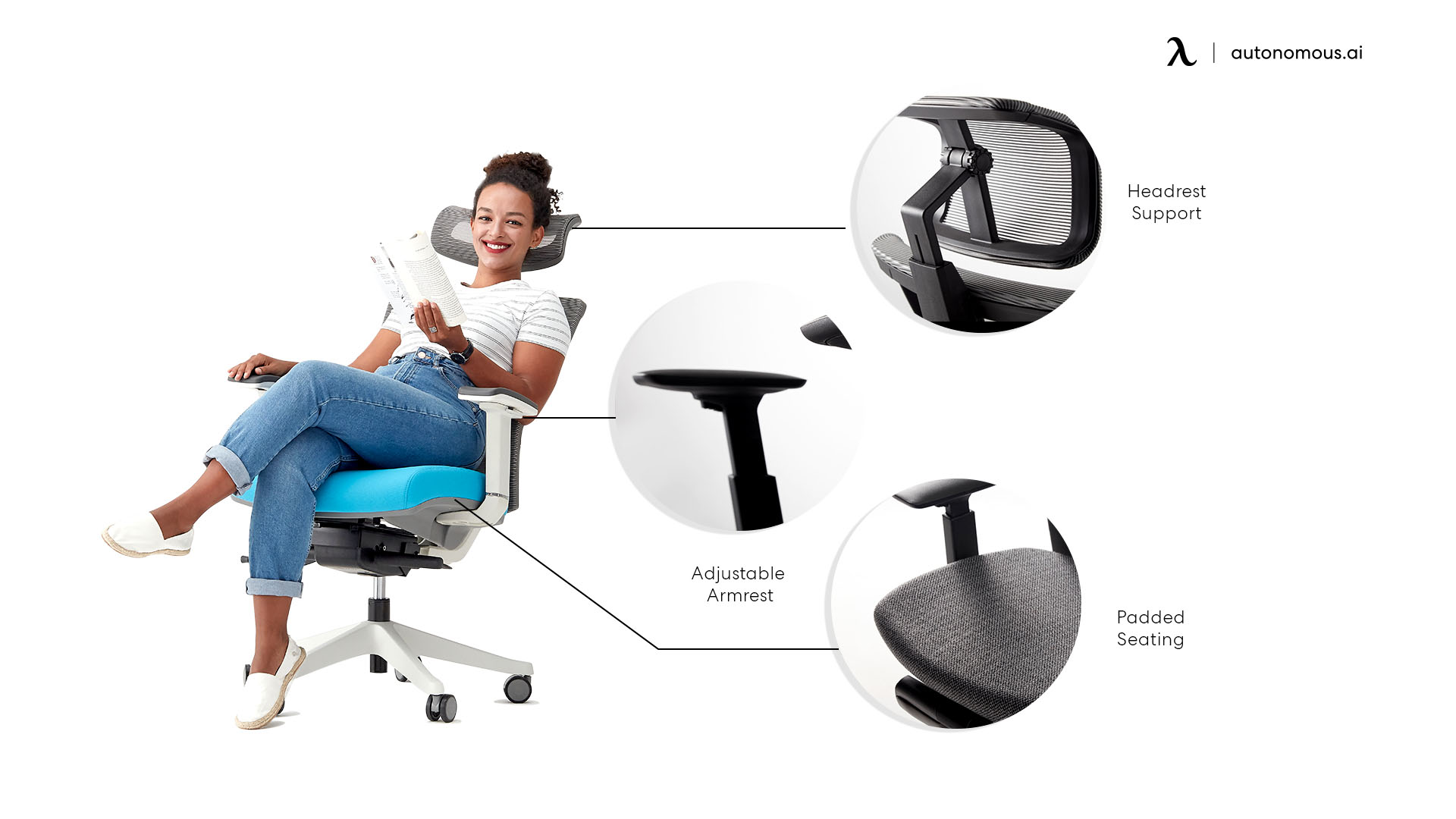
FAQs
1. What is the best office chair for a short person?
The best office chair for a short person offers a low seat height (ideally starting around 15 inches), a shallow seat depth, and adjustable lumbar and arm support to promote proper posture.
2. What is the chair height for a 5 ft person?
For someone who is 5 feet tall, a seat height between 14 and 16 inches from the floor is generally ideal to keep feet flat and knees at a natural angle.
3. What is a good seat height for short people?
A good seat height for short people typically falls between 15 and 17 inches, allowing for balanced posture and proper leg support.
4. What is the best seat depth for petite people?
The best seat depth for petite people is between 14 and 16 inches. A shallower seat helps ensure your back stays supported without the front edge pressing against your thighs.
5. What seat height is best for 5’2”?
For someone who is 5'2", a seat height between 15 and 17 inches usually provides the right ergonomic alignment and comfort.
6. What is a petite chair?
A petite chair is designed for users under 5'4", featuring a lower seat height, shorter seat depth, and a smaller frame that better fits shorter body proportions.
7. What is the best office chair for back pain for a short person?
For short individuals with back pain, the best chairs include adjustable lumbar support, seat height, and seat depth to reduce strain on the lower back and encourage proper posture.
8. Which ergonomic office chair with lumbar support is best for short people?
The best ergonomic chairs for short people include adjustable lumbar support, which allows you to align the chair with your natural spine curve, helping ease pressure on the lower back.
9. What is the best office chair with a 14-inch seat height for short people?
A chair with a 14-inch seat height works well for those under 5'2". It allows the feet to rest flat on the floor, reducing leg strain and improving circulation.
10. What is the best office chair for a 5-foot person?
For a 5-foot-tall person, a chair with a seat height between 14 and 16 inches and a shallow seat depth offers the most ergonomic support.
11. What is the best office chair with a 15-inch seat height?
A chair with a 15-inch seat height provides proper ergonomic alignment for many petite users, keeping the hips and knees at a comfortable angle and improving overall posture.
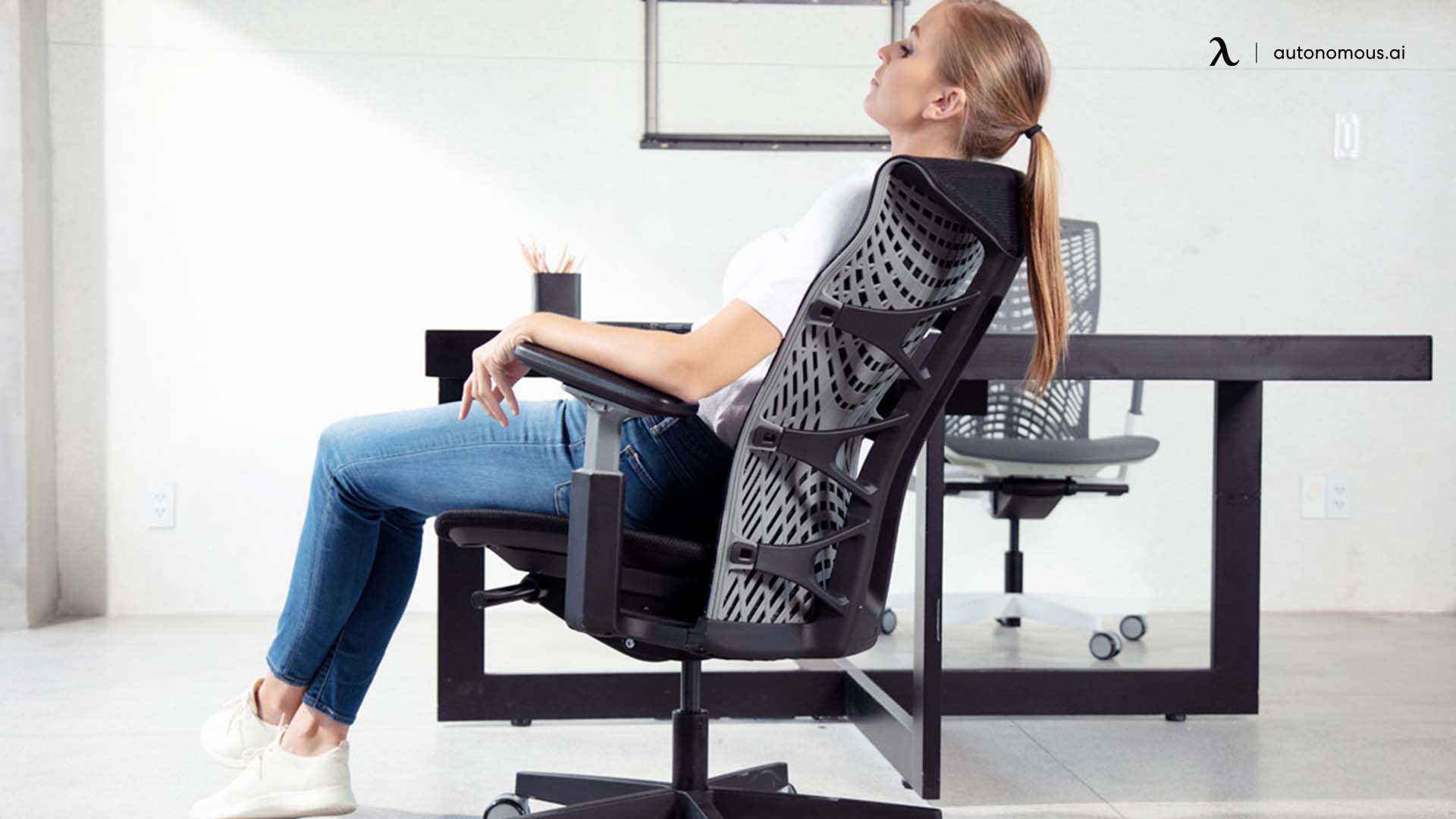
Bottom Line
Finding the best office chair for short people isn’t just about style—it’s about ergonomics, adjustability, and whether the chair truly fits your frame. The models above prove that you don’t have to settle for a one-size-fits-all seat. With the right features, even petite users can sit comfortably and confidently, hour after hour.
If you're looking for specialized options, podcasters might find comfort with specific podcast chairs. For a touch of unique design, a boho office chair can be an excellent choice. Finally, for a comprehensive overview of various office chair options, consult the office chair tier list.
Spread the word
.svg)

